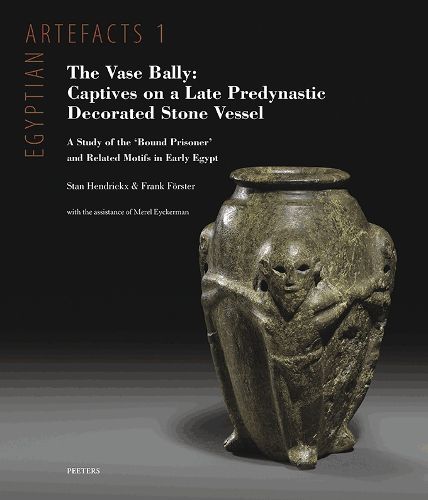Readings Newsletter
Become a Readings Member to make your shopping experience even easier.
Sign in or sign up for free!
You’re not far away from qualifying for FREE standard shipping within Australia
You’ve qualified for FREE standard shipping within Australia
The cart is loading…






The Vase Bally, named after its first owner, Swiss businessman Eduard Bally (1847-1926) who acquired it in Luxor in 1904, is one of the most exquisite late Predynastic decorated stone vessels ever discovered in Egypt. First published and discussed by Egyptologist Henri Wild in 1948, the vessel, made of dark-green serpentine and measuring 18.6 cm in height, and its exceptional figural decoration, showing three bound captives in raised relief, deserve a new in-depth study in the light of current research on Predynastic and Early Dynastic art and iconography. This lavishly illustrated book offers a detailed study of this unique object and its decoration, as well as discussions of its possible ritual use, meaning, and sociocultural significance. Moreover, it places its iconography within the early development of the 'bound prisoner' and related motifs of interpersonal violence at a time that was crucial for state formation in Egypt. Without doubt, the visual expression of domination and violence against real or potential opponents was a fundamental aspect of the self-image and representation of the ruling elite in those times. Exhaustive catalogues of related objects and representations, including some lesser known or even hitherto unpublished artefacts, as well as famous objects of 'art' such as the Narmer Macehead and Palette, are an integral part of the study.
$9.00 standard shipping within Australia
FREE standard shipping within Australia for orders over $100.00
Express & International shipping calculated at checkout
The Vase Bally, named after its first owner, Swiss businessman Eduard Bally (1847-1926) who acquired it in Luxor in 1904, is one of the most exquisite late Predynastic decorated stone vessels ever discovered in Egypt. First published and discussed by Egyptologist Henri Wild in 1948, the vessel, made of dark-green serpentine and measuring 18.6 cm in height, and its exceptional figural decoration, showing three bound captives in raised relief, deserve a new in-depth study in the light of current research on Predynastic and Early Dynastic art and iconography. This lavishly illustrated book offers a detailed study of this unique object and its decoration, as well as discussions of its possible ritual use, meaning, and sociocultural significance. Moreover, it places its iconography within the early development of the 'bound prisoner' and related motifs of interpersonal violence at a time that was crucial for state formation in Egypt. Without doubt, the visual expression of domination and violence against real or potential opponents was a fundamental aspect of the self-image and representation of the ruling elite in those times. Exhaustive catalogues of related objects and representations, including some lesser known or even hitherto unpublished artefacts, as well as famous objects of 'art' such as the Narmer Macehead and Palette, are an integral part of the study.